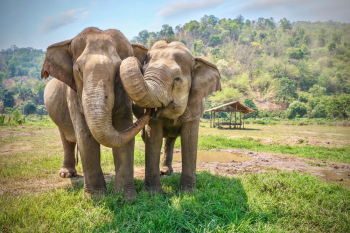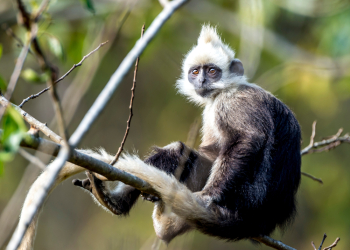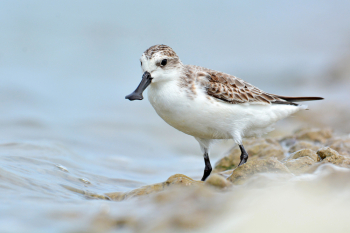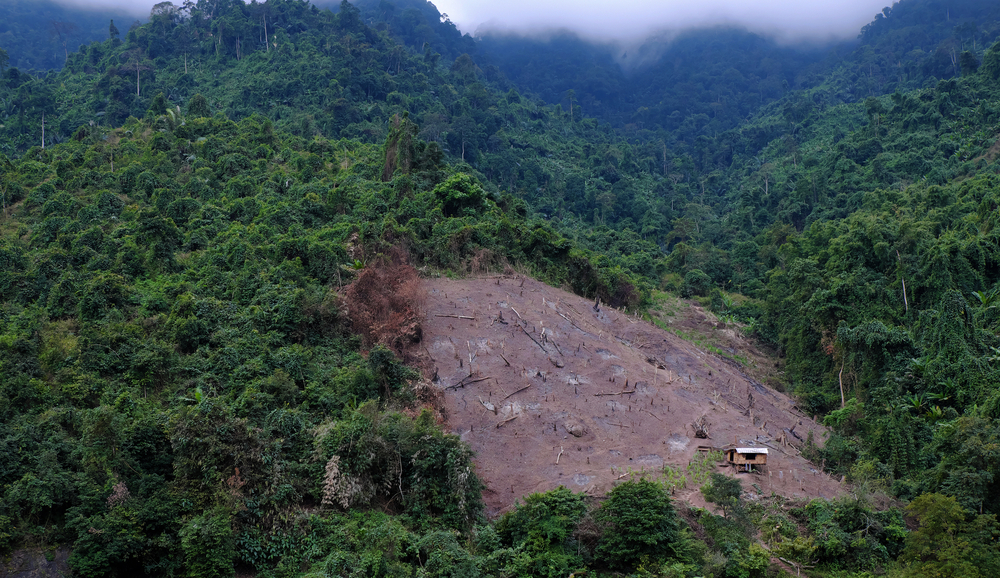Endangered Species
An endangered species is a species of animal or plant that is seriously at risk of extinction. The International Union for Conservation of Nature (IUCN), an organization funded by the European Commission, is regarded as a global authority on the world’s living species and maintains a list of the world’s endangered species. More than 8,000 scientists from 162 countries make up the IUCN’s Species Survival Commission, which designates as “threatened” any species falling within the critically endangered, endangered, and vulnerable categories. These species are assigned categories based on the level of extinction risk. Identifying a species as threatened and assigning it to one of the related categories is a complicated process, involving the analysis of multiple interconnected variables. These include population size, geographic range, and the number of breeding adults.
Risk Factors
Population Size
There are a variety of factors that put these plants and animals at risk. Most species placed on endangered lists have very small populations with a small number of breeding adults. In addition to being a problem in its own right, this can lead to a loss of genetic variation among species, since small populations of animals are forced to inbreed. The young are subsequently left vulnerable to disease and often fail to reach maturity.
Habitat
Habitat can also be a risk factor. From the clear-cutting of the Amazon rainforest for the purpose of grazing cattle to overhunting and overfishing, living species are under increasing strain in the modern world. When humans build homes, office buildings, and fun parks, preserving space for plants and animals is frequently not a priority. Loss of habitat creates a ripple effect, with animals often deprived of shelter and primary food sources that end up placing them in a vulnerable state.
Range
A plant or animal's range is a function of its habitat and is also used to assess a population's survival risks.
Environmental Factors
Finally, environmental factors such as pollution, a changing global climate, and increasingly extreme weather events are other factors placing a strain on the world’s plants and animals. Before a plant or animal is considered endangered, these factors are taken into consideration. Awareness of the problem leads to a search for solutions—and some measures are being enacted—although current trends suggest that the number of endangered species will only increase as time goes on.
Vietnam's Threatened Species
Note: Numbers reflect current estimates and may vary by source.
Top Three Endangered Mammals of Vietnam
Saola (aka Asian Unicorn, Spindlehorn, Vu Quang Ox)
One of the world's rarest large mammals, the Saola is Vietnam's most critically endangered species. The country is home to about 50 Saola, which are a type of elusive forest-dwelling bovine native to the forests and montane habitats of the Annamite Range, which straddle the border between Laos and Vietnam. It has long, parallel horns and a dark brown coat with white markings on its face, legs, and underbelly. The Saola is herbivorous, feeding on a variety of plants. It is a shy and elusive species; therefore, little is known about its behavior in the wild. It is active during the day and believed to be solitary in nature, only coming together during the breeding season. The Saola has a unique vocalization that sounds like a high-pitched whistle, which is thought to be used to communicate with other individuals. Due to its rarity and the remote nature of its habitat, the Saola remains one of the least-studied large mammals in the world.
The main threats to Saola are habitat loss, hunting, and climate change. Their habitat is rapidly disappearing due to deforestation and other forms of land use change, such as the conversion of forests to agricultural land. This is reducing the amount of suitable habitat available for the species and fragmenting its populations. The Saola is highly valued for its meat and horns, and it is hunted both for local consumption and international wildlife trade. This has led to significant declines in the species' numbers. The construction of roads and other forms of infrastructure in the Saola's habitat is making it easier for hunters to access its remote forests, further exacerbating the threat of hunting. Climate change also is affecting the Saola's habitat by altering the distribution of its preferred plant species, as well as altering water availability in its montane habitat. The governments of Vietnam and Laos have agreed to work together on a Saola conservation program by establishing the world’s first conservation breeding center for rare Annamite species at Vietnam’s Bach Ma National Park.
Tonkin Snub-Nosed Monkey (aka Vietnamese Snub-Nosed Monkey)
Endemic to a few isolated forest fragments among the karst limestone peaks of northern Vietnam, the Tonkin snub-nosed monkey is one of the world's most endangered primates. They have an upturned snub nose, long arms and legs, and tails as long as their bodies. A dense, black fur covers their bodies with a lighter-colored underbelly and distinctive white eyebrows. Tonkin snub-nosed monkeys are arboreal and primarily found in evergreen and mixed deciduous forests. They are omnivores, feeding on a variety of foods, including leaves, fruits, flowers, insects, and bark. Tonkin snub-nosed monkeys are social animals and live in large groups of up to 100 individuals. They are highly vocal, using a variety of sounds to communicate with each other such as grunts, screams, and whistles. They are active during the day and spend most of their time in the trees, although they may occasionally descend to the forest floor to feed on ground-level vegetation. Tonkin snub-nosed monkeys are known for their playful behavior, and individuals have been observed sliding down branches and playing chase.
Factors negatively impacting the survival of Tonkin snub-nosed monkeys are habitat loss, hunting, and climate change. Deforestation and other forms of land use change, such as the conversion of forests to agricultural land or the construction of infrastructure, is reducing the amount of suitable habitat available for the species and fragmenting its populations. Despite being protected by Vietnamese law, Tonkin snub-nosed monkeys are hunted for their meat and bones, which are used for medicinal purposes, as well as being captured for the pet trade. This has led to significant declines in their numbers and resulted in small, isolated populations that are at increased risk of extinction. Climate change also is affecting the species by altering the distribution of its preferred food and altering the timing of seasonal events, such as flowering and fruiting.

Asian Elephant (aka Asiatic Elephant)
Native to Asia, this species is smaller than the African elephant; however, it still requires large areas to roam. Asian elephants are grayish in color, with a wrinkled and patchy skin. They have smaller ears and a more rounded head than their African counterparts. They are found in a wide range of habitats, including grasslands, forests, and swamps, and they are capable of adapting to different environments. They are found across much of Asia, from India to Southeast Asia, with some populations also found in Sri Lanka, Nepal, Bhutan, and Bangladesh. Asian elephants are herbivores, feeding on grasses, leaves, bark, fruits, and shrubs. They require large amounts of food and water, and they are known to feed for up to 18 hours a day. Asian elephants are social animals and live in family groups led by a matriarch. They have a complex social structure, and their behavior is characterized by close bonds between family members, including mothers and their young. They also are known for their intelligence, and they are capable of exhibiting a wide range of emotions, such as joy, sadness, and anger.
Asian elephants face a number of threats, such as habitat loss and fragmentation, poaching, human-wildlife conflict, and climate change. The destruction of elephant habitats for agriculture, urbanization, and infrastructure development is a major factor that is reducing the amount of suitable habitat available for the species, fragmenting populations, and creating conflicts with humans. Asian elephants are hunted for their ivory tusks, which are highly valued in the illegal wildlife trade. As human populations expand and encroach on elephant habitats, there is increasing conflict between elephants and humans. This can result in damage to crops and property, as well as in the death of both elephants and humans. Climate change also is affecting Asian elephants by altering their habitats, reducing the availability of food and water, and increasing the frequency and severity of natural disasters. Conservation efforts are under way to protect this species, including habitat restoration, anti-poaching measures, and the creation of elephant-friendly corridors to help promote genetic diversity and reduce the risk of inbreeding.

Other Endangered Mammals of Vietnam
Other endangered mammals found in Vietnam include the Asiatic black bear, eastern black-crested gibbon, and four species of langur: the white-headed langur, Delacour's langur, Francois' langur, and red-shanked douc langur. Also known as the Asian black bear, this rare species is illegally hunted for its skin, paws, gall bladder, and bile. Additionally, its numbers are affected by human-bear conflict and deforestation due to logging, urbanization, and agriculture. Poaching and loss of habitat also are threatening the leaf-eating primates known as langurs. One of the world's rarest and most critically endangered primates, the eastern black-crested gibbon is only found in northeastern Vietnam and the bordering region of China. Its endangerment is a result of hunting as well as loss of habitat due to deforestation, human encroachment, and expansion of agriculture. In addition to being hunted for their meat, this monkey species is illegally sold as pets and used for "medicinal" purposes.
| The following sections describe the three groups (aside from mammals) with the largest numbers of endangered species according to the table above. |

Endangered Fish of Vietnam
Vietnam's endangered fish include many types of sharks, such as the zebra shark, whitecheek shark, whale shark, hammerhead shark, and hardnose shark. Shark populations are declining due to a variety of factors, including overfishing, finning, habitat loss, and climate change. Commercial and sport fishing, as well as accidental bycatch in fishing gear, is a major threat to sharks. Some species have slow growth and reproduction rates, making them vulnerable to overfishing. The demand for shark fins for use in shark fin soup has led to the practice of finning, in which the fins are removed, and the rest of the shark is discarded. This has had a devastating impact on many shark populations. The destruction and degradation of important shark habitats, such as coral reefs and mangroves, has reduced the available habitat for many sharks. Additionally, changes in temperature and ocean chemistry due to climate change impacts the distribution and abundance of shark species, as well as their food sources. Conservation efforts, such as regulating and enforcing fishing quotas, protecting important shark habitats, and reducing the demand for shark fins, are necessary to ensure the long-term survival of shark populations.

Endangered Birds of Vietnam
The list of Vietnam's endangered birds includes many migratory species, including the spoon-billed sandpiper, Eurasian curlew, Nordmann's greenshank, black-faced spoonbill, and Saunders's gull. The populations of these migratory birds are decreasing due to habitat loss as a result of urbanization, agriculture, aquaculture, and industrial development. Many of the country's natural wetlands are being converted into land for growing rice and practicing aquaculture, which has caused overuse of chemical fertilizers and pesticides that destroy the ecological balance.
Endangered Plants of Vietnam
Among Vietnam's endangered plants are several kinds of rosewood trees, rushfoils, umbrella trees, camellias, and cycads. Despite being protected by the Vietnamese government, rosewood trees are among the country's most threatened plants because of high demand for their timber by illegal trade and logging. Loss of habitat, most often due to human activity, is another major factor affecting Vietnam's many endangered plants.
Copyright © 1993–2025 World Trade Press. All rights reserved.

 Vietnam
Vietnam 
